Posted by
Shay Harel
Finally, a month of endless updates to the Google SERP! I’ve been complaining ever since 2019 began that Google has slowed down its production of changes, updates, and tests to the SERP. No more! June 2019 was a month for the ages with changes to domain diversity at the top of the SERP, additional layers of sub-topical information in all sorts of SERP features, and some good ol’ updates to Google Ads!
And away we go with Google’s whirlwind of SERP alterations made in June 2019!

Increased Domain Diversity on the Back of the June 2019 Core Update
Google is always fond of making numerous changes on the back of its algorithm updates. The June 2019 Core Update was no exception. With the update, Google made a change to domain diversity at the top of the SERP… in that the top results are now allegedly more diverse. In specific, Google said that a domain can appear among the top results but twice, at most. The idea is to open up the top results to more domains thereby making the SERP, or at least “the top of it” (whatever that means) more diverse.
Of course, this can’t nor should apply across the board. Indeed, Google said that there can and will be instances when a domain appears more than twice among the top results on the page.
There still has been no indication as to how this will play out in the event a site has multiple pages that align to multiple unique user intents.
A Bit on the June 2019 Core Update
The change in top-of-the-SERP domain diversity came a day into the roll-out of the June 2019 Core Update. As a result, it was a bit harder for SEOs to determine the causality of their ranking changes in some instances (i.e., was the ranking change caused by the update per se or by the change to domain diversity?)
Since we’re on the subject, and despite initially covering the June 2019 Core Update in the previous version of the SERP News, I just wanted to revisit the topic briefly. First off, Google has indicated that they will continue preannouncing core updates and will continue to name these updates as well. Google taking upon itself the duty to name its core updates comes due to the industry ascribing names that associate core updates with totally unrelated updates that have been released over the years (for example, some referred to the March 2019 Core Update as ‘Florida 2’ despite it having no relevance to ‘Florida 1’).
Also, a look at the impact of the update after the dust had settled showed that YMYL (Your Money Your Life) niches generally saw more extensive rank stability losses than others:
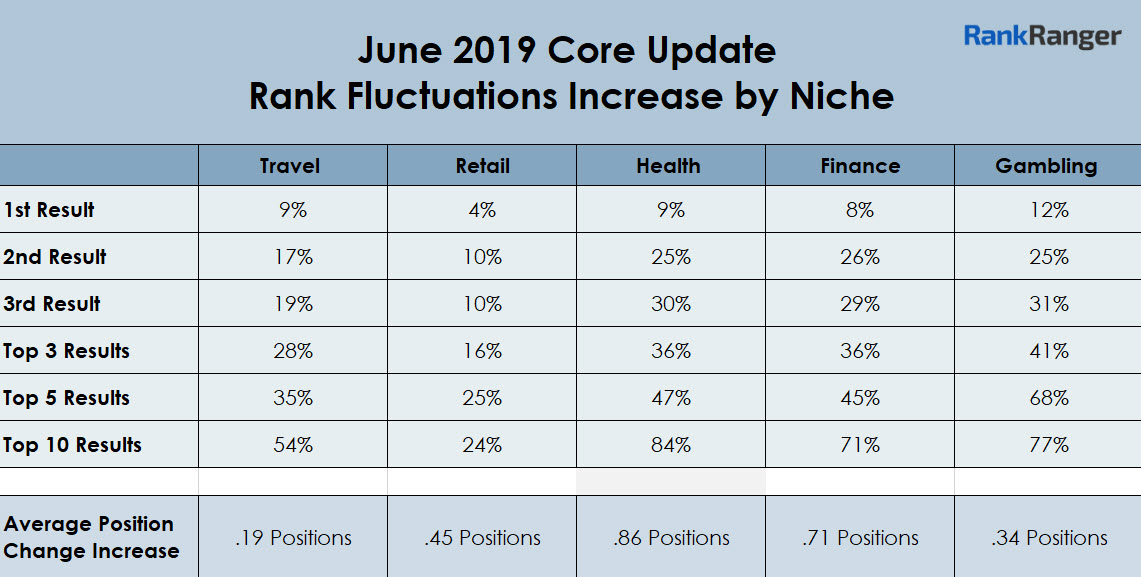
Changes to SERP Features Indicate Topic Layer Advancement
As I said earlier, June saw Google return to its normal behavior of rolling out a barrage of changes and tests to its SERP features. Instead of running through them all one-by-one (which I will do for some changes/test later on), I want to survey some updates that I very much feel fall under a single pattern… an increased Topic Layer proficiency. Google’s Topic Layer, announced as part of its 20th Anniversary updates, reflects the search engine’s ability to sub-categorize according to a specific entity, entity type, topic, and so forth.
Here’s a look at a few changes that point towards a more prolific ‘Topic Layer’:
Another Layer Added to Business Information Queries
It used to be that when you did a search on mobile for something like best buy hours in lawrence ny you would get a Direct Answer listing the store’s hours. In fact, on desktop, this is exactly what you will see:
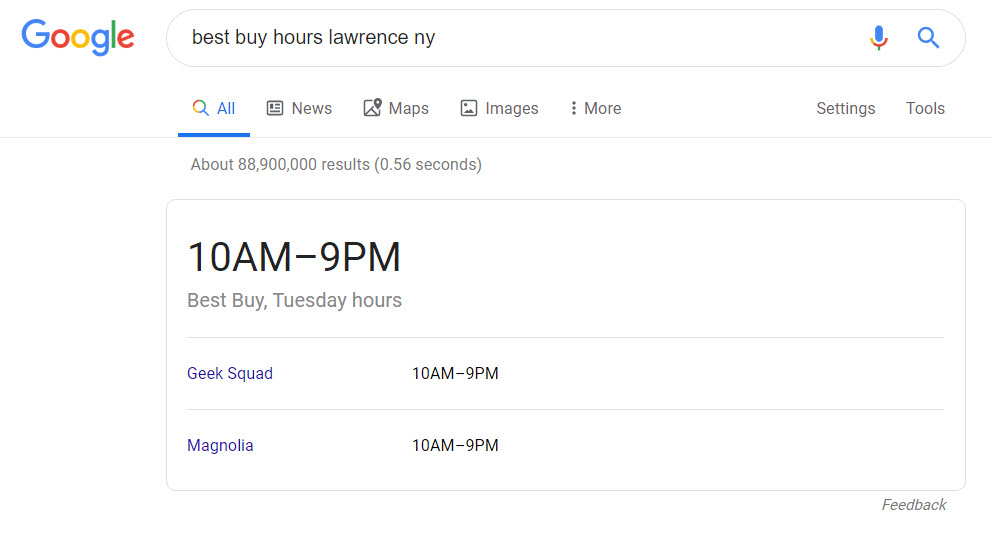
That said, the same query on mobile now includes the business’s Google rating:
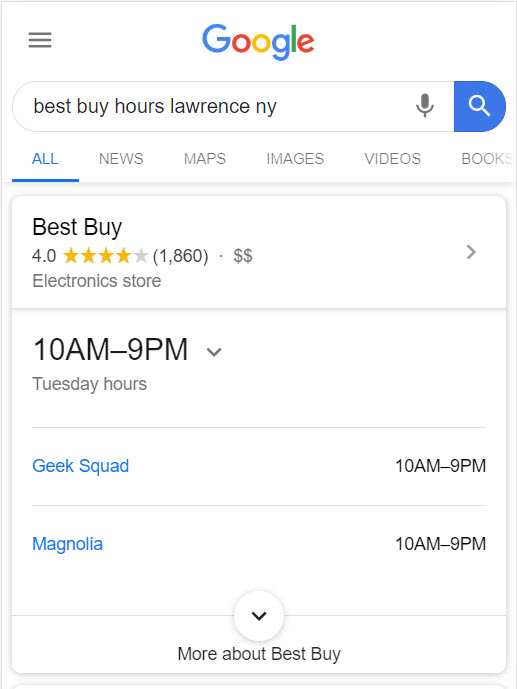
In other words, an extra topical layer, a business rating, has been tacked onto the business information (i.e., store hours)shown in the Answer Box.
Tab-Filled Branded Local Packs Appear on the SERP
In general, a Local Pack on mobile may contain tabs such as Locations, Menu and, About when a brand query is executed (i.e., KFC near me). However, a test had mobile Local Packs filled to the brim with all sorts of tabs related to a plethora of sub-topics.
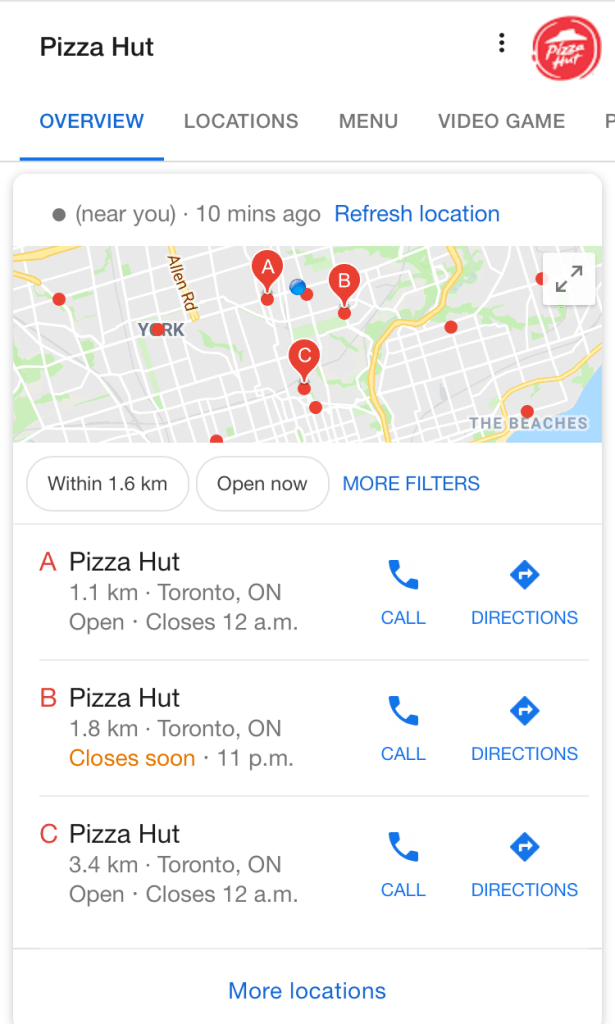
A test showing additional tabs for a branded Local Pack (Image Source: Alakov.com)
Nothing more clearly shows that there has been a “Topic Layer proliferation” than additional tabs to branded Local Packs. Why? Because the initial and foundational example of Google’s Topic Layer was the insertion of additional and entity-specific tabs to mobile Knowledge Panels. This paradigm that originated in the Knowledge Panel is now being tested within the Local Pack.
Topically Relevant Google Posts
Google Posts generally appear within a business’s Local Knowledge Panel in order of the **** they were created. That is, no matter the topic reflected in the post, the newest content appears first in the content carousel. That was all until a recent Google test showed a carousel of Google Posts that aligned to the topic reflected in the query.
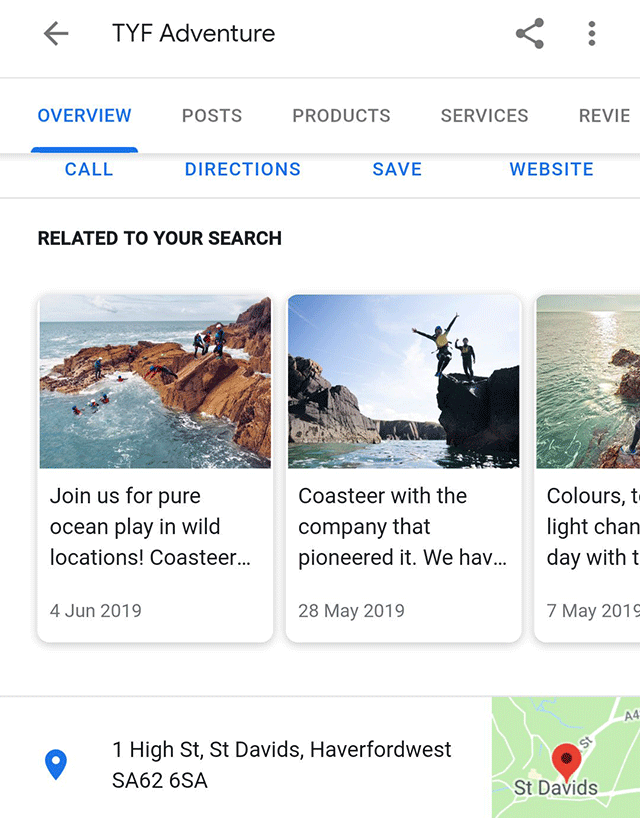
A carousel of Google Posts containing content directly related to the query (Image Source: SERoundtable.com & Claire Carlile via Twitter)
Rather than solely show a series of Google Posts in order of their creation, Google pulled a series of previous posts that spoke to the topic indicated in the query. In other words, the posts were topic-centric and not merely ****-centric.
This is a clear case of Google utilizing its Posts feature to present additional sub-categorized and entity/topic specific content to users.
[For more on how to properly optimize and utilize Google Posts check out Greg Gifford’s recent interview on The In Search SEO Podcast.]
Google Expandable Refinement Tabs
Further indicating an increase in ability to sub-categorize topics and entities to new extremes, Google has added a product refinement element to the mobile SERP. When executing a broad query for a product on mobile, Google may show a series of expandable tabs that represent product sub-topics. Expanding the cards presents the user with carousels with each card reflecting a specific subcategory.
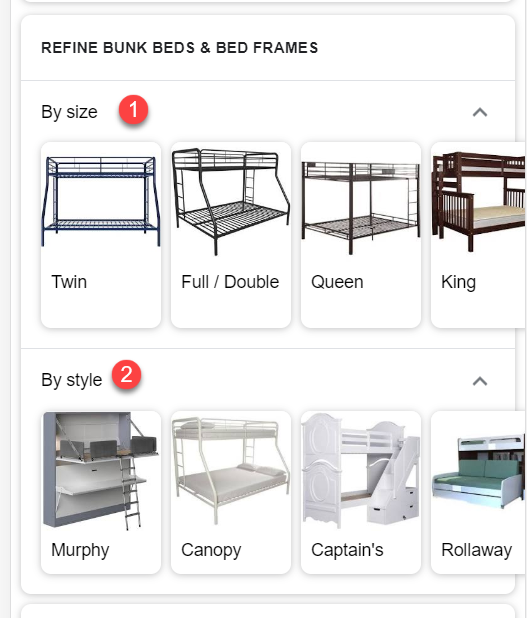
Two refinement carousels appearing for the search term ‘bunk beds’
The carousels, as seen above, present you with the ability to refine your product. In this case by size and style. In other words, Google has broken bunk beds up according to size and style. Clicking a given card brings you to a SERP specifically aligned to that subcategory. So if I were to click on queen sized bunk beds within the carousel shown above I would be directed to a SERP for the query queen bunk bed:
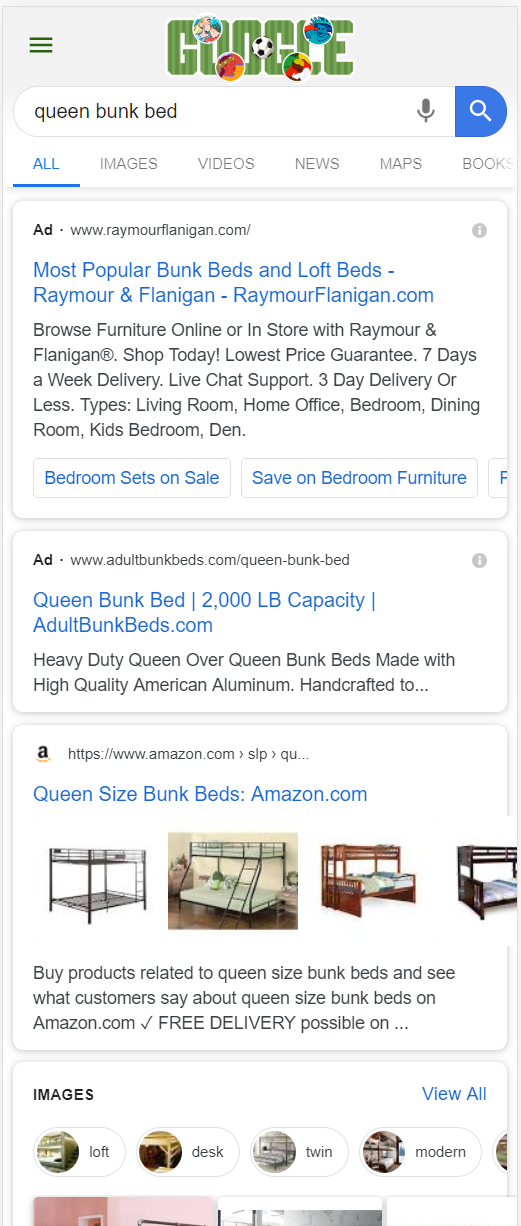
In other words, what you basically have here is the topic layer applied to products and commerce queries!
Google Ads Updates: June 2019
You know we’re getting back to a “normal” amount of SERP updates when we have a nice series of changes/tests to Google Ads to discuss! Here are a few gems that reared their heads during the month of June:
More Inclusive Location Targeting
Google has updated the option to hone in on users within a target area to include users “regularly in your targeted locations.” In simple terms, this means you can show ads to users who employ your location within the search query but are not actually located within that geographic zone.
So let’s say you’re planning a vacation to Miami and are doing all sorts of searches related to the great Floridian city… now Google will let local advertisers target you.
As a result, advertisers may want to consider the intent behind an actual local user vs. someone utilizing the location within the query. A classic example would be a resident’s local intent vs. a prospective tourist’s local intent. Are they the same? Do they differ? If so, how?
In any case, quite an interesting change that to me makes a great deal of sense.
Site Popularity In Tested Ad Extension
Quite the peculiar ad extension was tested in mid-June! The test showed an automated extension indicating the number of site visits garnered over a seven day period.
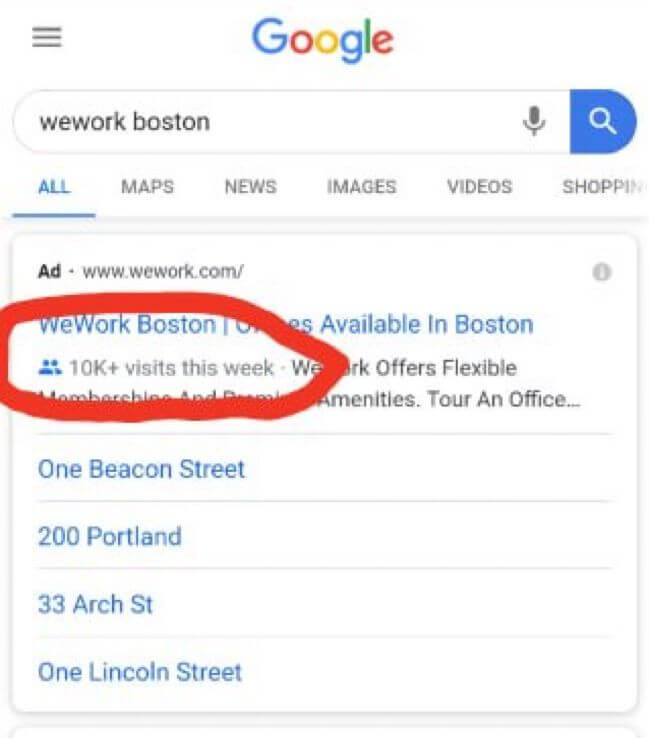
A Google Ads test placed an automated ad extension that indicated the number of weekly visitors to the site sponsoring the ad (Image Source: Search Engine Land via KoMarketing)
The obvious benefit of such an extension is that it helps build user confidence (assuming a decent number of visits were made to the site). One can only assume that the metric is being powered by a site’s Google Analytics account. As of the time of this writing, the “weekly visits extension” seems to be part of what was a very limited test.
The ‘People Also Considered” Google Ads Carousel
Speaking of limited tests, towards the end of June a new Google Ads format was spotted on the SERP. The composition of this test had one large ad that rested on top of a carousel of ads under the heading People Also Considered.
There are two ways you could look at this. On the one hand, since the carousel ads are far smaller than the featured ad, advertisers who sit within the carousel may not be too excited about the format. On the other hand, with a title like People Also Considered the advertiser behind the featured ad might not be too happy either. That is, the title almost implies there is a reason to look beyond the featured ad and consider other options.
3D Video Ads Come to the SERP
In June, Google Ads introduced us to “Swirl.” Swirl is a new ad format that allows advertisers to create video ads that enable users to get a good look at a product by rotating it 360°. The new 360° Google Ads are applicable to the mobile SERP to the exclusion of desktop and really let advertisers showcase a product in an extremely engaging way.

In June, Google announced a new ad format that contains a rotating video image within it (Image Source: The Google Marketing Platform Blog)
It should be noted, that same announcement also brought all-new advertising options to the live streaming community. Google hopes to capitalize on the growth of live stream events by offering advertising options designed specifically for the medium. To this extent, Google is offering advertisers a way to tease their YouTube live stream events and then allow users to continue to the actual event directly from the ad.
In Other Google News – June 2019
While I’ve already discussed many of the updates and tests made to Google’s SERP features, we’ve only scratched the surface thus far. We literally have another dozen SERP changes to discuss. As I said, we’re back to normal on the Google SERP!
A New Menu for Google’s Desktop SERP
In May, Google undertook a serious overhaul of its mobile SERP by adding favicons, a colorless ad label, etc. Google seems to be in the “redesign” mood as after extensive testing it has updated how the menu on the desktop SERP looks.
Previously, the desktop SERP’s menu consisted of written labels. The new look contains icons next to the written labels as you can see below:
![]()
Aside from adding icons, when looking at the results under a given menu header, both the icon and written label move from gray to color:
![]()
Local SERP Feature Updates
Local features saw an unreal number of tests and changes over the course of June… and that’s in addition to the changes we’ve discussed thus far!
A Slew of Google My Business Changes Announced
On June 20th, Google took the local SEO world by storm with a series of changes that have come to Google My Business. The changes include:
- Deals within the Local Panel: Google is now letting businesses use the Local Panel to offer consumers special offers. In order to access these offers, users will have to first follow a business via the Local Panel. To me, this has less to do with making users happy via special offers and more to do with getting a business in the social media mindset. That is, the update would seemingly make businesses interested in garnering followers via the Local Panel in much the way they would on social media.
- Short Names: A few months back, Google allowed a business to create a “short name” which acts like the way a URL might in that a business can use the short name to share its profile on the web. At the time, only Local Guides were originally able to access a business’s short name. No longer. Now anyone and everyone now utilize a business’s short name!
- Set Your Own Cover Photo, Instant Photos, & Logo Insertion: A point of contention for some time, Google is now letting business owners upload and set their own cover photos (i.e., the main photo that appears within the Local Panel. Google is also telling business owners that uploaded photos will now appear instantly while the ability to add captions to these images is forthcoming. At the same time, businesses can now display their logo within their local listing.
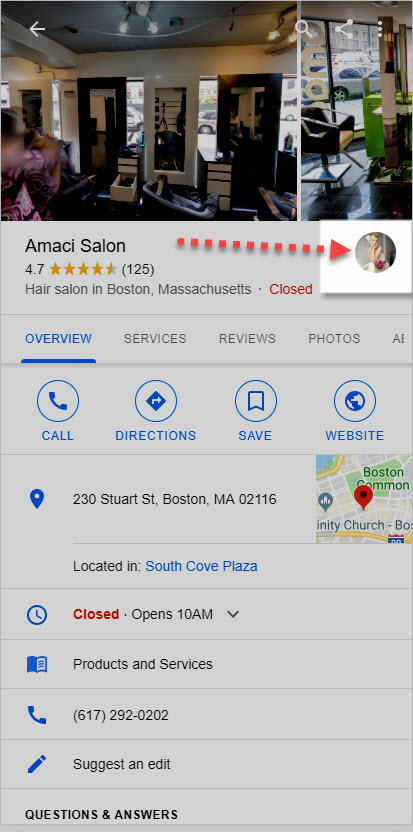
A Local Panel for a Boston Salon showing with the business’s logo
Merging the Local Panel Into Organic Results
Google has now merged the Local Panel with organic results. This means that as you scroll past the initial elements of the Local Panel and reach the organic results the tabs within the panel form a sticky header that follows you down the SERP.
As a result of the new Local Panel format, you may find Knowledge Panel elements within the organic results. That is, you may see a few organic results and then an element that is normally found within the Local Panel.
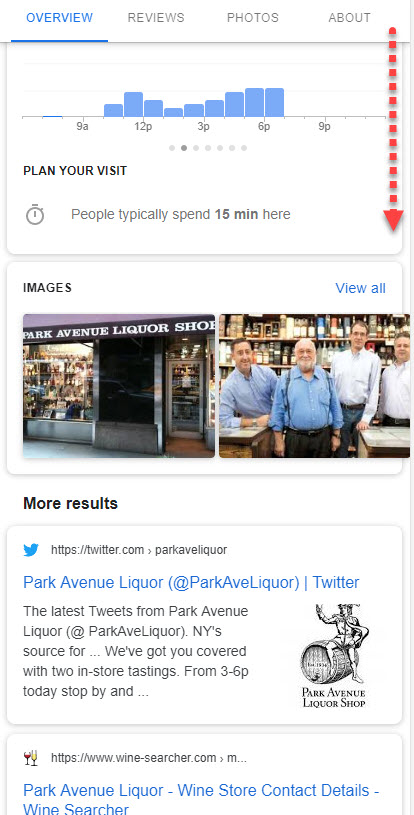
Sticky header functionality now applies to the Local Panel
The functionality now seen within the Local Panel is not new per se. Knowledge Panel formats, such as the Movie Knowledge Panel, have incorporated this functionality for some time.
Local Pack Location Filter
This Google test gave users the ability to choose their own local listing location to pull results in from. Appearing in the top right of the Local Pack, the test had a button that read “Choose area.”
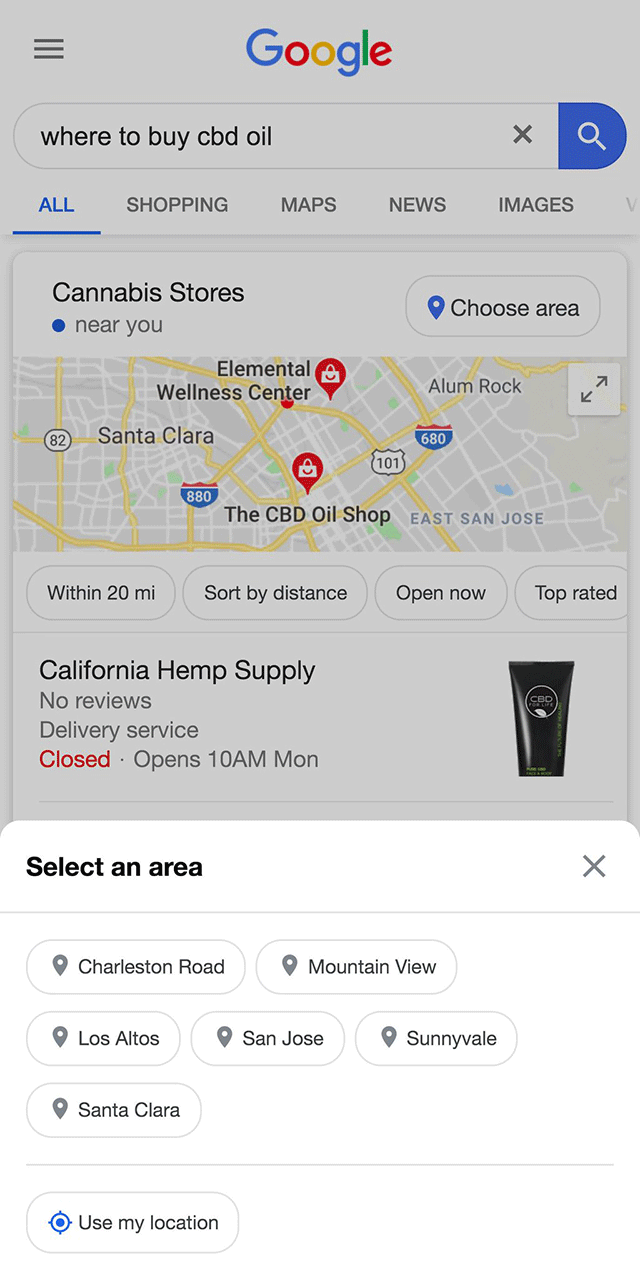
A Local Pack tests allowed users to choose a specific area from which to show listings within the Local Pack (Image Source: SERoundtable.com via Valentin Pletzer)
Upon clicking the “Choose area” button Google users were given multiple locations from within one general area to receive local listings from.
If you ask me, this sort of functionality will come to the SERP permanently in some way, shape, or form as I discussed on a recent episode of The In Search SEO Podcast.
Google Tests Local Pack Carousels
Sticking with the local listings for a moment, Google tested a carousel version of the Local Pack. The carousel appeared under a map, much the way the listings normally appear within the Local Pack. Each carousel card included the name, address, and hours of the business along with the ‘Call’ and ‘Directions’ buttons.
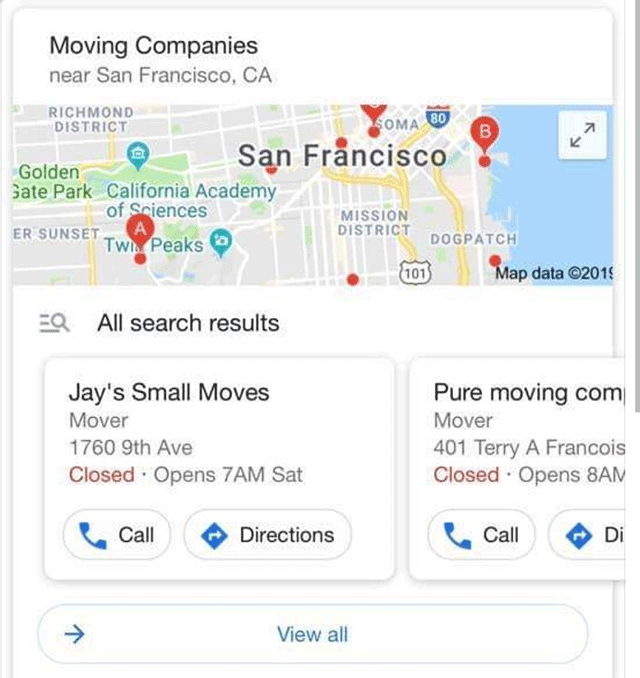
A scrollable Local Pack carousel being shown in place of the traditional box format (Image Source: SERoundtable.com via Chas Henry)
Q&A Autosuggest Answers Exclusively from Reviews
One of my favorite elements within the Local Panel, the Q&A feature (which lets users ask and answer questions about your business and even allows a business to create their own FAQ on the SERP), got a peculiar update. Google had created an autosuggest answer feature for the mobile Q&A element in April 2019. Early June not only saw the Q&A autosuggest come to desktop but also saw a change in where the autosuggest options are pulled from.
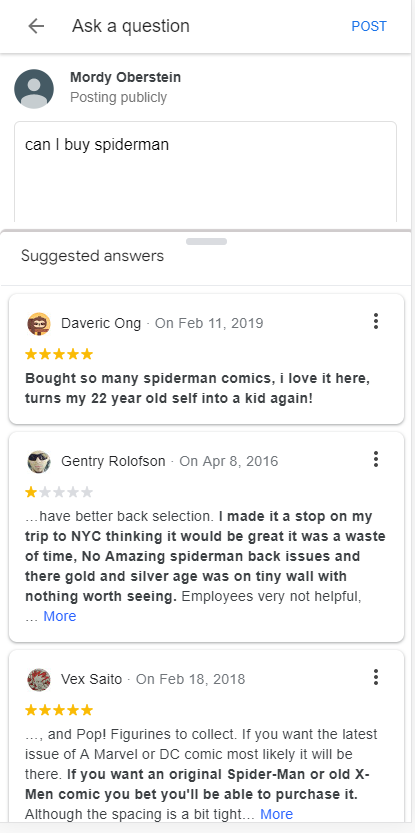
Google showing automated answer suggestions within the Local Panel’s Q&A feature coming from Google reviews
Previously, the Q&A autosuggest presented options pulled from the very answers found within a business’s Local Panel. This meant that a business’s own answers had the potential to appear in the Q&A autosuggest. No longer. Now Google is supplying the Q&A autosuggest with content that comes exclusively from reviews.
Bookmarks for Youtube Results on the Google App
I normally don’t get into all the nuances of the Google App in these posts. However, a mid-June test was not only significant but one that I see coming to the SERP itself at some point. The test showed a rich video result that contained a snippet of sorts within which were timestamps.
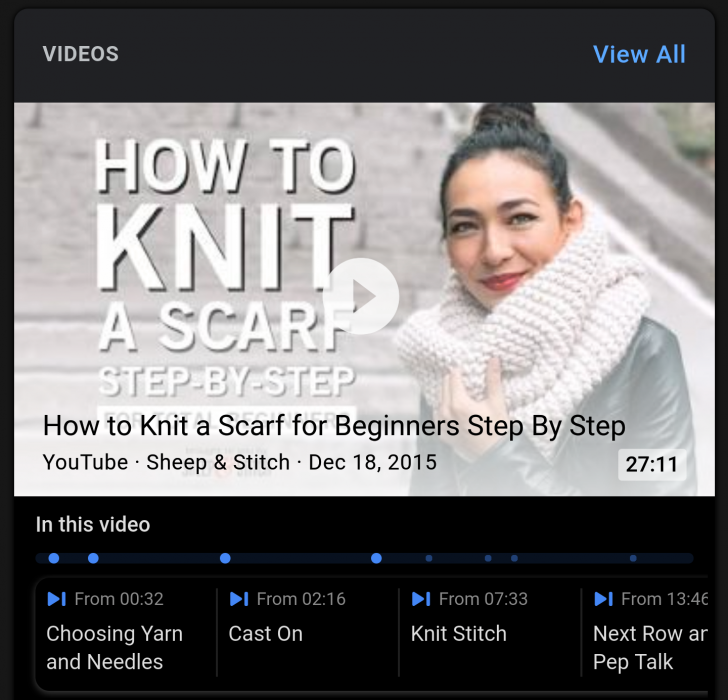
A timestamped video result as it appeared in the Google app (Image Source: Android Police)
The timestamp presented a timeline of the video which outlined the subtopics within it and when each subtopic began during the video.
More Results Button Sees Desktop SERP
Back in April 2018, Google did away with pagination in favor of a ‘More results’ button on mobile. Could the same format be headed to desktop as well? An early June SERP test may indicate just that. Numerous cases of Google employing a desktop ‘More results’ button were reported in what seems to have been a widespread test (or at least wider than usual).
Bizarre ‘People Also Search For’ Testing
Throughout June I was fortunate to have been trapped in more than one offbeat test to Google’s ‘People Also Search For’ feature. In one instance, I was presented with a box that contained an image thumbnail along with a title representing the search option (i.e., what people also searched for). Hovering over the thumbnail produced additional thumbnails representing other search options:

What’s bizarre is that the test had me rely on visually identifying the search options as there was no name/title that accompanied the thumbnails. In this particular case, as I know nothing about cricket, I had no idea who any of the people represented by the thumbnails were.
In a similar and even more bizarre test, hovering over the image thumbnail resulted in the thumbnail rotating through the various “search options.” In other words, instead of seeing a series of related search options, I saw thumbnails associated with those options where the thumbnails just rotated through upon me hovering over them. I had to click a dropdown menu to see the actual results. So that was “fun!”
Google to Automate Social Profiles in the Knowledge Panel
Say goodbye to social profile markup being used for the Knowledge Panel. Google has said they will no longer look at the markup to decide which social profiles go into the Knowledge Panel. Instead, Google will automate which social profiles will be shown. Google did say that if you claim a Knowledge Panel you may suggest the social profiles that you think should appear, but there is no guarantee Google will utilize your recommendations.
New Data on Google’s Podcast Feature
Last, but not least, here’s a nice little SERP feature data tidbit for you as we recently added the new podcast feature to our SERP Feature Tracker. The initial data shows that the feature appears on just .001% of page one SERPs on desktop (similar data on mobile as well).

Google’s newly released podcast feature appears on a minimal number of page one SERPs
Of course, one would not expect the feature to be shown on a vast number of SERPs since the query must directly reflect a podcast for the feature to appear.
Layer Upon Layer Upon Layer

You might think that more layers of subcategorization, while significant, is nothing new. However, when a quantity of something hits critical mass you’ve reached a whole new qualitative level. Add more water and energy to a wave and you have yourself a tidal wave. Add more rain and wind to a storm and you have a hurricane on your hands. Add more layers of subcategorization to the SERP and you have yourself something other than a search engine. You have a resource center on your hands. It’s not just a matter of there being more instances of layered subcategorization. Rather, at a certain point, the SERP reaches a new level of saturation where it becomes something other than a straightforward results page.
I think while we’ve been hinting at the idea of Google transcending its status as a search engine per se for some time now, that notion is now becoming a tangible reality.
Stay tuned because I think Google is just getting started…

